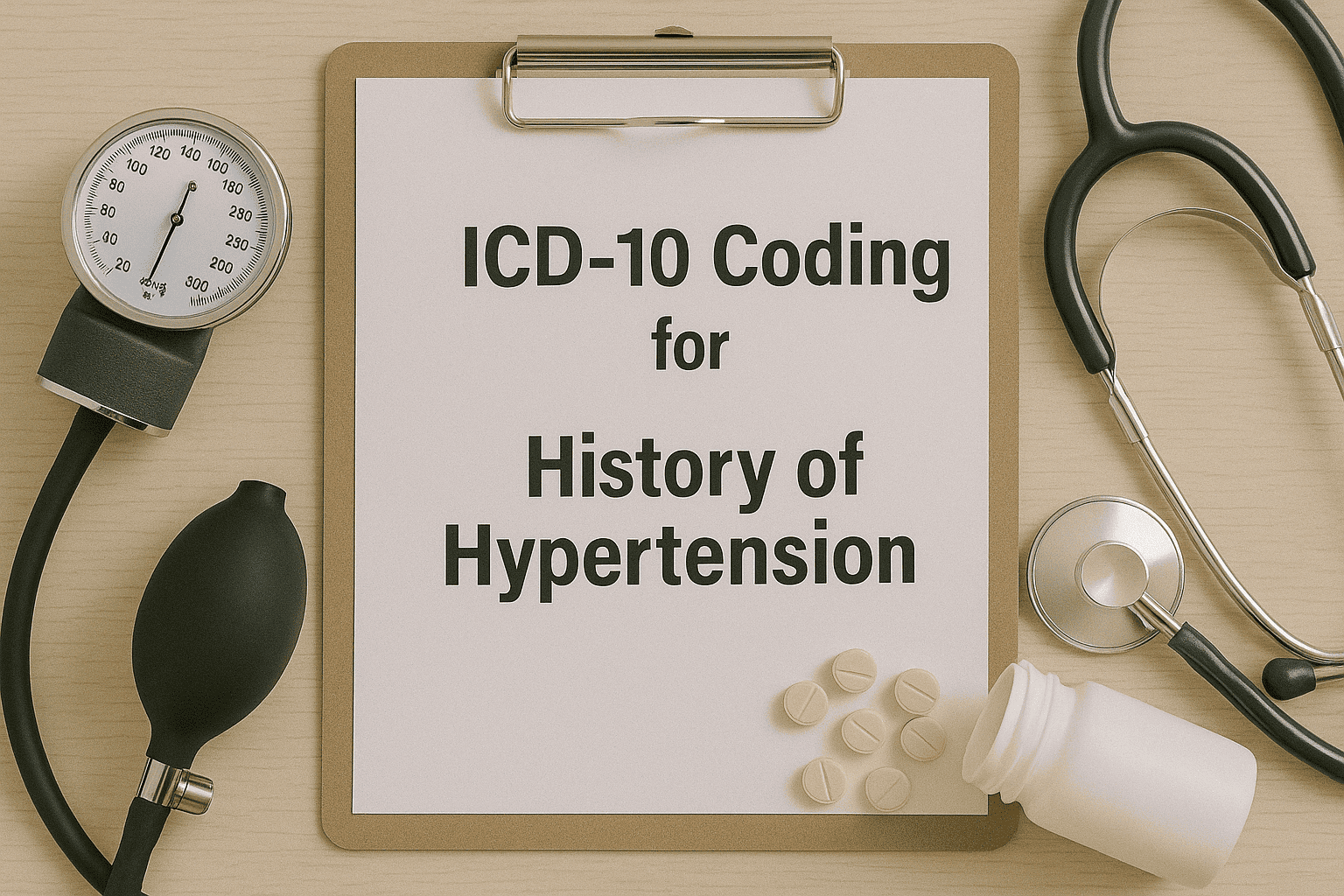Updated on: July 23, 2025
Hypertension is one of the most common chronic conditions globally—and documenting a patient’s history of hypertension accurately is vital for proper care, coding, and long-term risk assessment. Whether the patient presents for a routine check-up or an unrelated concern, noting their hypertension history is critical.
This guide explores how to properly interpret, document, and code a history of hypertension, while demonstrating how tools like DocScrib simplify your clinical documentation with real-time AI assistance.
What Does “History of Hypertension” Mean Clinically?
When clinicians refer to a patient having a history of hypertension, it doesn’t just mean that the patient had high blood pressure in the past. It usually implies:
-
The patient has a diagnosis of hypertension, currently controlled or uncontrolled
-
They may or may not be on antihypertensive medications
-
The condition is chronic, requiring ongoing monitoring and documentation
🩺 Key Point: A documented history of hypertension should prompt regular blood pressure checks, medication reconciliation, and evaluation of end-organ effects.
ICD-10 Coding for History of Hypertension
Properly coding a patient’s hypertension history ensures billing accuracy, risk stratification, and quality reporting. Here’s how to do it right.
Primary ICD-10 Code for Hypertension
| Code | Description |
|---|---|
| I10 | Essential (primary) hypertension |
This code is used whether hypertension is controlled or uncontrolled, unless a more specific hypertensive disease is present.
ICD-10 Codes for Hypertension With Complications
| Code | Use Case |
|---|---|
| I11.0 | Hypertensive heart disease with heart failure |
| I11.9 | Hypertensive heart disease without heart failure |
| I12.0 | Hypertensive chronic kidney disease, Stage 1–4 |
| I12.9 | With CKD, unspecified stage |
| I13.0 | Hypertensive heart and CKD with HF |
| Z86.79 | Personal history of other diseases of circulatory system |
⚠️ Avoid coding Z86.79 for essential hypertension—it’s typically reserved for resolved or past circulatory issues, not ongoing hypertension.
When to Use “History of Hypertension” in Documentation
Even if the patient’s BP is normal on the day of the visit, their past diagnosis still matters. Here are situations when documenting history of hypertension is necessary:
-
Patient is on antihypertensives like amlodipine or losartan
-
BP is within normal limits, but the patient has an established diagnosis
-
Condition is not the reason for today’s visit, but still clinically relevant
-
For risk adjustment in Medicare Advantage or chronic care plans
💡 Use “Hypertension, controlled on medication” or “Essential hypertension” in your assessment to ensure appropriate coding.
Clinical Workflow Example
Case:
55-year-old male comes in for annual wellness visit. BP is 122/76. He’s on lisinopril. You want to note his hypertension history and ensure proper coding.
Traditional Workflow:
-
Manually search ICD-10 code
-
Write a SOAP note
-
Manually document medications and vitals
DocScrib Workflow:
🧠 AI detects medication + past diagnosis
📝 Suggests ICD-10 I10, highlights antihypertensive regimen
🧾 Auto-generates note:
S: No current complaints. Taking lisinopril 10 mg daily.
O: BP 122/76. Labs within normal limits.
A: Essential hypertension (I10), controlled on medication.
P: Continue lisinopril. Follow-up in 6 months.
🔄 One-click export to EHR. ICD-10 included. No errors.
Why Documenting History of Hypertension Matters
| Benefit | Impact |
|---|---|
| Risk Stratification | Adds risk score in Medicare/Medicaid plans |
| Medication Reconciliation | Clarifies need for continued therapy |
| Preventive Planning | Triggers cardiovascular screening protocols |
| Coding & Billing Accuracy | Prevents claim denials |
| Legal and Clinical Record Integrity | Demonstrates continuity of care |
ICD-10 Coding Scenarios: Hypertension Documentation Examples
| Scenario | Recommended Code(s) |
|---|---|
| Controlled BP, on meds | I10 |
| Uncontrolled hypertension with CKD Stage 3 | I12.0 + N18.3 |
| Hypertension with heart failure | I11.0 + I50.9 |
| No current hypertension, resolved in past | Z86.79 (use with caution) |
| Elevated BP today, but no official diagnosis | R03.0 (Elevated BP reading) |
How DocScrib Simplifies Hypertension Documentation
DocScrib is your AI-powered assistant that listens, understands, and auto-generates clinical notes, ICD-10 codes, and summaries—so you can focus on patients, not paperwork.
| Feature | Traditional EHRs | With DocScrib |
|---|---|---|
| ICD-10 Code Suggestion | Manual search | ✅ Auto-suggested via context |
| Medication Flagging | Manual entry | ✅ Auto-pulled from notes |
| SOAP Note Generation | Typed manually | ✅ Auto-generated in real-time |
| Risk Coding Assistance | Often missed | ✅ Integrated in suggestions |
| Time Saved Per Visit | Minimal | ✅ 5–10 minutes per chart |
👩⚕️ “DocScrib helps me document hypertension and chronic disease care without missing key codes or clinical elements.” — Internal Medicine MD
FAQs: History of Hypertension & ICD-10 Coding
Q1: Should I code I10 even if the patient’s BP is normal today?
Yes, if they have a history of hypertension and are on medication, I10 applies.
Q2: What if I don’t mention hypertension in my note, but it’s in the med list?
If not documented in the note, it may not be captured for billing or risk stratification. Always explicitly mention it.
Q3: Is Z86.79 appropriate for hypertensive patients?
No. That’s for resolved circulatory conditions—not ongoing hypertension.
Q4: How can DocScrib help with chronic disease coding?
DocScrib detects medications, prior diagnoses, and vital trends to auto-suggest relevant ICD-10 codes and structured notes—with full control for the provider.
Final Thoughts: Turn Documentation into Better Care
Documenting a patient’s history of hypertension is more than a checkbox—it’s a critical component of chronic care planning, billing, and preventive health strategy. With the growing burden of clinical documentation, tools like DocScrib bring relief and reliability into the workflow.
DocScrib empowers clinicians to:
-
Save time on every note
-
Improve ICD-10 coding accuracy
-
Deliver continuity and compliance
-
Avoid missed diagnoses and billing gaps
🔗 Learn more at DocScrib.com
📅 Book a Demo Now
